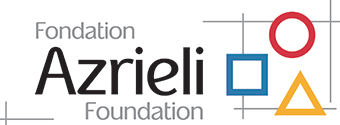Fetal alcohol spectrum disorder (FASD) is more common than many people realize. In Canada, it impacts approximately 4% of the population, or 1 in every 25 people. FASD is considered the leading cause of developmental disability. And yet, there is much less awareness of FASD than there is other neurodivergences like autism or ADHD.
FASD is caused by alcohol consumption during pregnancy. The effects on the child can vary widely depending on the amount of alcohol consumed and at what point during the pregnancy. These effects can include impacts on motor skills, learning, memory, focus and attention, emotional regulation, communication, and social skills. There can also be differences in physical appearance, including facial features and minor birth defects, and can cause organ damage or damage to the nervous system. Due to these far reaching impacts, it is important to understand how FASD can impact the music learning process and what strategies to use with students.
FASD is caused by alcohol consumption during pregnancy. The effects on the child can vary widely depending on the amount of alcohol consumed and at what point during the pregnancy. These effects can include impacts on motor skills, learning, memory, focus and attention, emotional regulation, communication, and social skills. There can also be differences in physical appearance, including facial features and minor birth defects, and can cause organ damage or damage to the nervous system. Due to these far reaching impacts, it is important to understand how FASD can impact the music learning process and what strategies to use with students.
Here are a few differences you might see in your students with FASD:
There’s much more, but this is a quick snapshot of the challenges that will most impact your lessons or classes with students with FASD. While teaching these students will definitely require an adaptive approach, the good news is that there are a lot of strategies that have been shown to be effective. Here are a few you can try:
Here are a few you can try:
- Don't offer choices. This may seem like it take agency away from the student, but choices can be distressing for them. If you do want to offer a choice, make it two only rather than an open choice (eg. Instead of "what song do you want to do next?" either say "would you like to do song A or B?" or just instruct the student on what to play next).
- Ensure comprehension by asking them to do the task, not just express verbally that they understand.
- Practice empathy if your student has trouble managing their emotions. This lack of emotional regulation may lead to unexpected behaviour—remember that this is a brain difference and not purposeful misbehaviour. Try to reduce the source of frustration or work through calming strategies with the student.
- When communicating with your student, ensure that your non-verbal communication enhances what you’re trying to communicate verbally. That will help your student to “fill in the blanks” if they don’t quite understand the verbal communication. Use your facial expression, tone of voice, and gestures to help. Break down tasks for your student. Ask them to complete one step at a time. Memory issues can really hinder learning, especially when only having lessons once per week. Try making video recordings of yourself or the student completing tasks for your student to follow when practicing at home. Ensure that your student thoroughly understands a concept before moving on, and review frequently.
- Maintain a structured lesson routine. It may be helpful to have a visual schedule. Let the student know of any differences in that routine at the beginning of the lesson or even the week before if possible.
- Present everything as black or white with no in between. Student with FASD can have a lot of difficulty discerning the rules when they change or fluctuate. This means that if you have a rule in your studio or classroom, it needs to be the rule at all times with no exceptions.
- Harness their creativity by including activities like improvisation and composition. Students with FASD also often enjoy other artistic pursuits, like dance and visual art. Try having your student create a rhythmic movement sequence for a song you’re teaching, or create a drawing that communicates the emotions of a piece of music.
Because they tend to have strong artistic abilities and interest, music making can be a real joy for students with FASD. By incorporating these strategies, you can facilitate an engaging and rewarding music learning experience and may spark a lifelong love of making music.
Happy teaching!



